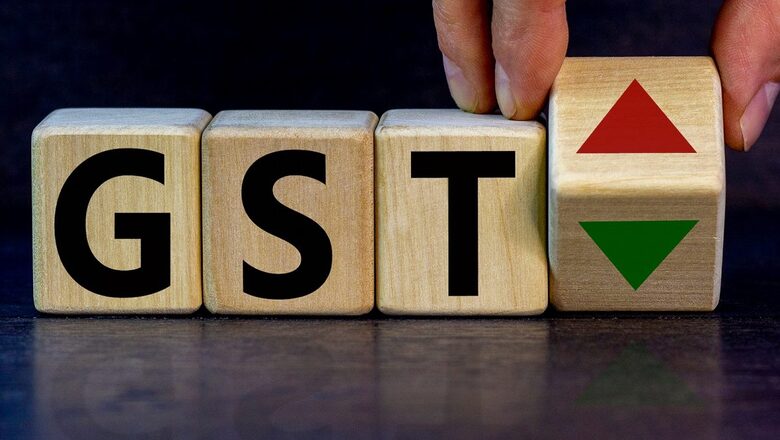
views
As the GST collections have been hitting new records of late, a report by India Ratings and Research said the state GST (SGST) growth at an average 6.7 per cent during FY18-FY21 has been lower than the 9.8 per cent growth recorded by the taxes subsumed under GST during FY14-FY17.
“The share of state GST (SGST) in their own tax revenue (SOTR) during FY18-FY21 stood at 55.4 per cent, compared with 55.2 per cent during FY14-FY17 indicates that the growth in both SGST and non-SGST components of SOTR has been broadly similar. This means the GST implementation did not result in any incremental benefit to the SOTR,” India Ratings said in the report.
It added that until the GST implementation, producing/exporting states besides collecting VAT (sales tax) on the sales within the states used to collect central sales tax (CST) up to 2 per cent on the inter-state sales. The states where CST was contributing more than 4.5 per cent to their SOTR during FY12-FY17 were Assam, Chhattisgarh, Gujarat, Haryana, Himachal Pradesh, Jharkhand, Meghalaya, Odisha, Sikkim and Tamil Nadu — a mix of both producing and consuming states. After the GST implementation, the proportion of CST in SOTR declined to 0.95 per cent in FY21 (RE) from 4.16 per cent in FY17.
“SGST growth at an average 6.7 per cent during FY18-FY21 has been lower than the 9.8 per cent growth recorded by the taxes subsumed under GST during FY14-FY17,” it said.
India Ratings said that since GST is a destination-based tax, goods/services are taxed at the place where they are consumed and not at the origin or where they are produced. “Even the integrated GST (IGST) collected by the centre is shared with the state where the goods or services concerned are sold and not where they are produced. Hence, consuming states were expected to do better after the roll-out of GST.”
Therefore, it said, GST compensation has become such an important source of revenue for states that without it the GST revenue growth of most states will not reach 14 per cent. “It is for this reason that many states are not ready to accept its discontinuation by June 2022 and are demanding an extension.”
GST compensation, which is given to states for a shortfall in their revenue, released by the union government to states in FY18 stood at Rs 49,000 crore. It increased to Rs 83,000 crore in FY19, Rs 1.65 lakh crore in FY20, Rs 2.78 lakh crore in FY21 and Rs 2.39 lakh crore in FY22.
The central government borrowed Rs 1.1 lakh crore in FY21 and Rs 1.59 lakh crore in FY22 for providing compensation to states and passed it to them as loans on a back-to-back basis. As on April 27, compensation amounting Rs 78,704 crore for FY22 was pending, which is equivalent to compensation of four months.
The GST collections in April hit an all-time high of Rs 1,67,540 crore on the back of better compliance and faster economic recovery. It is Rs 25,000 crore more than the previous highest collection of Rs 1,42,095 crore recorded in March. “The gross GST revenue collected in the month of April, 2022 is Rs 1,67,540 crore of which CGST is Rs 33,159 crore, SGST is Rs 41,793 crore, IGST is Rs 81,939 crore (including Rs 36,705 crore collected on import of goods) and cess is Rs 10,649 crore (including Rs 857 crore collected on import of goods),” an official statement had said.
Read all the Latest Business News here



















Comments
0 comment